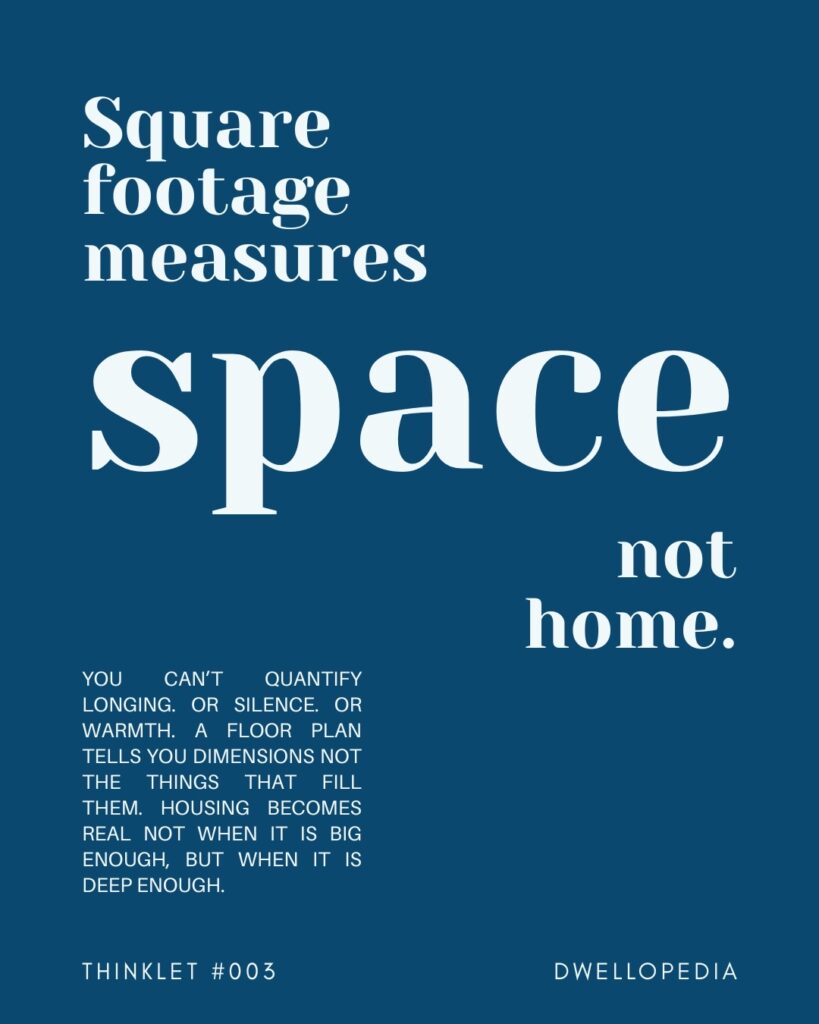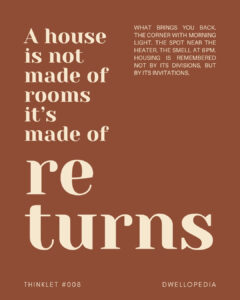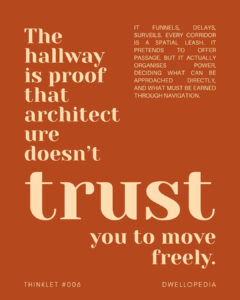In the age of metrics and measurements, the home is often reduced to numbers—square footage, floor plans, room counts—quantifiable data that suggest value and comfort. Yet, space is more than dimension; it is a vessel for feelings, memories, and rituals that resist measurement. To say that square footage measures space but not home is to confront a profound architectural truth: housing becomes real not when it is big enough, but when it is deep enough.
How do we capture the essence of what fills the space—longing, silence, warmth—when these are intangible? The story of home is told not by walls and ceilings alone, but by the play of golden-hour light across a well-worn corner, by the hush that settles in a quiet room, by the subtle rhythms of everyday life unfolding. Is intimacy quantifiable, or does it dwell in layers of presence that a plan cannot reveal?
Our obsession with size risks missing the soul of architecture—the atmosphere that lingers in moments and memories, the mood crafted by material and light, the resonance found in the simple act of return. A large house without invitation to presence can feel hollow, while a small one brimming with ritual and layered experience can seem boundless. What, then, does it mean to design “deep” housing, one that holds the complexity of life and time within its embrace?
This thinklet invites architects, students, and thinkers to pause before the metrics and immerse themselves in the poetic dimensions of dwelling. To embrace space not as an empty container but as an intimate landscape shaped by human experience.
Housing Unfolded: Transforming the Practice
How would housing design shift if depth, rather than area, became the guiding principle? If architects prioritized the qualities that resist measurement—atmosphere, memory, mood—over sheer size, what new forms of intimacy might emerge? The implications ripple through every aspect of design, from spatial organization to material choice, from light manipulation to social interaction.
Consider the experience of space at different scales. A large living room might offer expansiveness but risk anonymity; its vastness can swallow inhabitants in emptiness if it lacks invitation to presence. In contrast, a small nook with filtered sunlight, textured walls, and the scent of familiar objects can become a sanctuary. What if design sought to multiply these moments of “depth” rather than maximize area? How might architects rethink density not as crowding but as layered complexity—spaces within spaces that invite return and rediscovery?
Materials become storytellers in this practice. The tactile warmth of wood, the coolness of stone, the whisper of fabric—each layer adds dimension beyond the plan. Light, too, is a sculptor of depth: the way morning light stretches across a floor, or dusk filters through a curtain. Can housing be designed to hold these ephemeral qualities, transforming rooms into living, breathing atmospheres?
Thresholds—the entryways, transitions, and corners—acquire new significance. They are not merely passage but moments charged with meaning, places where movement slows and presence deepens. How might these intimate zones be designed to cultivate belonging, inviting inhabitants to settle into the folds of home rather than merely inhabit its perimeter?
Socially and culturally, valuing depth over square footage challenges prevailing narratives of housing success tied to size and grandeur. It shifts focus toward quality of experience, accessibility of meaningful spaces, and the cultivation of rituals that anchor identity and memory. How might this reorientation foster community, empathy, and resilience in neighborhoods where space is scarce but life is rich?
Embracing this thought encourages architects to adopt humility and curiosity—recognizing that space is not a commodity but a complex dialogue between form and inhabitant. It calls for designs that listen, that accommodate imperfection, that nurture ongoing relationships rather than static solutions. Housing thus becomes a layered conversation, echoing with the voices of past and present, seen and unseen.
Beyond Boundaries: Layered Understandings
Viewed through varied philosophical and cultural lenses, this thought reveals a prism of meanings, each layer inviting further reflection. Sustainability reminds us that smaller, deeper spaces often consume fewer resources yet offer richer experiences. How might ecological design embrace depth as a form of environmental respect, prioritizing quality over quantity?
Social equity lenses highlight that obsession with size can mask inequalities—luxury housing measured in sprawling square footage while marginalized communities contend with cramped conditions. Could focusing on depth transform housing policies and design to create spaces that nurture dignity and connection regardless of scale?
Memory and identity imbue space with layers of meaning that transcend physical dimensions. The places we return to hold stories of love, loss, and growth embedded in textures, sounds, and smells. How can architects design with these temporal layers in mind, honoring the deep roots of place and person?
Technological perspectives challenge us to consider how digital tools might both enhance and flatten spatial experience. Can virtual reality, smart lighting, and responsive systems be harnessed to deepen intimacy, or do they risk reducing space to data and simulation? How do we maintain the poetic and sensory richness of home amid technological advancement?
Each perspective refracts the original thought differently, reminding us that depth is not a fixed measure but a fluid quality shaped by context, culture, and lived experience. This layered understanding invites architects to embrace complexity and ambiguity, enriching both theory and practice of housing design.
Conclusion
To say that square footage measures space but not home is to open a poetic inquiry into what it truly means to dwell. This thinklet plants a seed—an invitation to architects, students, and thinkers—to cultivate designs that prize depth, intimacy, and layered experience over simple metrics.
The home that holds us is not the one that expands endlessly but the one that folds around us with warmth, memory, and presence. It is in golden-hour light, quiet corners, familiar rituals where space transcends size and becomes lived, loved, and returned to again and again.
As you reflect on this thought, consider: How might your design practice invite deeper dwelling—spaces that resonate rather than merely occupy? How can architecture nurture the invisible dimensions of home that defy measurement?
The power of this thinklet is not in answers but in its capacity to provoke wonder and ongoing questioning. What spaces will you create that go beyond square footage to touch the heart of what makes a house a home?







